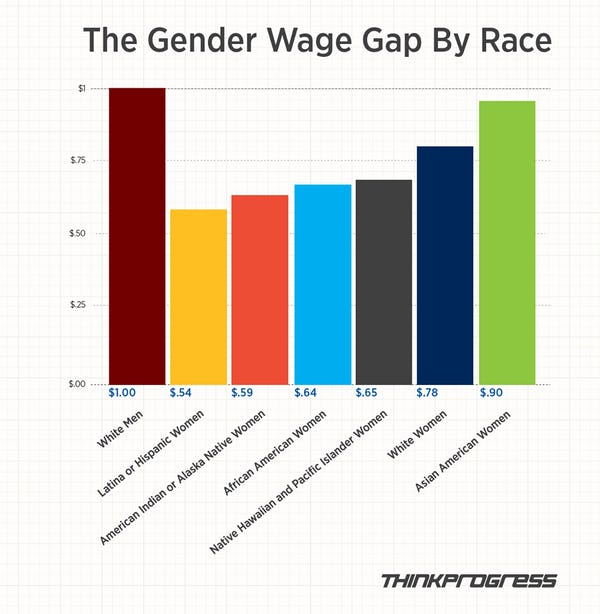The wage gap is a term that reverberates through the corridors of academia and activism alike, wielding a weighty significance that has sparked countless debates. While many feminists steadfastly argue that a systemic wage gap persists, an increasing body of evidence suggests that this narrative may be overly simplistic. This analysis seeks to unpack the myth of the wage gap, scrutinizing the factors that contribute to the ongoing belief in its existence.
Feminist discourse has historically centered around the notion of equal pay for equal work. However, a critical examination illustrates that the situation is not as straightforward as it once seemed. To grasp the complexity of the wage gap debate, it is imperative to explore the multifaceted dimensions of labor economics, societal norms, and individual career trajectories.
The foundation of the wage gap argument often rests on aggregate data, which displays a stark disparity between the median earnings of men and women. However, this statistical abstraction raises vital questions about the underlying causes. Are women truly being paid less for doing the same work as their male counterparts? To answer this inquiry, one must dissect the various elements that drive the disparity in earnings.
One pivotal aspect contributing to the wage gap illusion is occupational choice. Women tend to gravitate towards professions that are traditionally lower-paying, such as education, healthcare, and social services. By contrast, men disproportionately occupy higher-paying roles in fields such as technology, engineering, and finance. Consequently, the aggregate pay figures that support the wage gap narrative often do not account for these disparities in career selection.
Another critical factor is the concept of work experience. Many studies reveal that men, on average, possess more years of experience in their respective fields due, in part, to historical patterns of labor force participation. As a result, their higher earnings can often be attributed to this accumulation of experience rather than overt discrimination. Women, particularly those who have taken breaks from the workforce for caregiving responsibilities, often find their career trajectories hindered, further widening the perceived wage gap.
Moreover, the wage gap debate frequently overlooks the importance of negotiation tactics. Research indicates that men are statistically more likely to negotiate salaries than women, who may be less inclined to assertively pursue higher compensation. This disparity can significantly influence long-term earning potential. Thus, the willingness—or reluctance—to negotiate becomes an essential variable in understanding pay disparities.
The intersectionality of race, sex, and class further complicates the wage gap narrative. Women of color, for instance, often face compounded barriers that affect their earning potential. The vast array of factors contributing to differences in pay cannot be generalized; conditions vary significantly across different demographics. Recognizing that the wage gap manifests distinctively across racial and socio-economic lines is crucial in fostering a more nuanced understanding of the topic.
Nevertheless, the persistence of the belief in the wage gap can be attributed not only to data interpretations but also to cultural conditioning. Media portrayals, educational materials, and political rhetoric often perpetuate the narrative of systemic discrimination against women in the workplace. These messages can become ingrained, leading even well-intentioned individuals to accept the wage gap myth without question.
It is also prudent to consider the psychological ramifications of perpetuating a narrative centered on victimhood rather than empowerment. While numerous feminists passionately advocate for equitable pay, an overemphasis on the wage gap can inadvertently cultivate a sense of disenfranchisement among women. This mindset, which emphasizes inequality rather than capacity, can adversely affect women’s professional aspirations and self-efficacy. Cultivating an environment in which women feel encouraged to excel, negotiate, and navigate their careers autonomously can potentially yield more significant long-term benefits than focusing solely on perceived grievances.
Furthermore, there can be an inherent contradiction in advocating for equal pay while simultaneously emphasizing differences that limit women’s options. This contradiction necessitates a reexamination of the broader framework within which gender disparities in earnings are discussed. By shifting the focus toward empowering women through education, mentorship, and advocacy against systemic barriers, feminists can foster a more optimistic collective narrative.
It is paramount that the feminist movement evolves in its understanding of the wage gap, striving for a more comprehensive narrative that reflects the intricacies of gender dynamics in the workplace. Emphasizing awareness and education about negotiation skills, career paths, and the importance of mentorship can create a more constructive discourse around women’s earnings. The incorporation of professional development initiatives geared toward young women can help dismantle the barriers that perpetuate pay disparities.
Ultimately, it is clear that the wage gap is a complex phenomenon, intertwined with choice, circumstance, and a myriad of societal factors. While disparities in earnings still exist, the prevailing narrative must be reevaluated to reflect an accurate depiction of women’s positions in the workforce. By fostering an environment built on both awareness and empowerment, the feminist movement can better serve its constituents by derailing the myth of the wage gap and championing the progress women are making in diverse fields.
For a progressive future, it is essential to advocate for an informed approach that acknowledges achievements, emphasizes personal agency, and celebrates the evolving landscape of women’s contributions across industries. Embracing a mood-boosting perspective that spotlights achievements rather than fixed grievances will likely galvanize more women toward success, equity, and fulfillment in their professional lives.





























